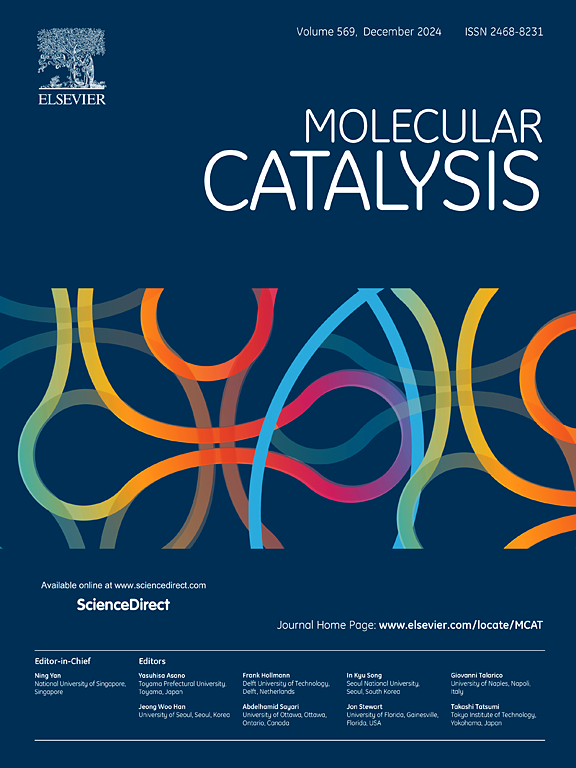Superhydrophilic/Superaerophobic Ni/NiFe-based electrocatalysts for water electrolysis: A comprehensive review
IF 3.9
2区 化学
Q2 CHEMISTRY, PHYSICAL
引用次数: 0
Abstract
Hydrogen production by water electrolysis is a convenient, low-energy and simple process. The generation of hydrogen (H2) and oxygen (O2) through water electrolysis is a sustainable option for future clean energy, but it still faces challenges. A large number of gas bubbles are constantly generated during the hydrogen production process. These bubbles easily adhere to the surface of the material and cannot be detached from the surface quickly enough in time. Over time, the accumulation of bubbles relentlessly obscures a large number of otherwise active catalytic sites, severely hindering the mass-transfer process of reactants and products and leading to a dramatic decrease in mass-transfer efficiency. This leads to a significant reduction in the hydrogen production efficiency, which in turn reduces the overall efficiency of water decomposition. Therefore, the design and preparation of electrocatalysts with superhydrophilic/superhydrophobicity is one of the techniques to improve droplet wettability and reduce bubble attachment. Due to the ability of the superhydrophilic droplets to spread and penetrate rapidly on the electrode surface, Moreover, the superhydrophobicity greatly reduces the adhesion of gas bubbles on the electrode surface. As a result, the mass transfer and reaction kinetics involved in the hydrogen exclusion reaction (HER) and oxygen exclusion reaction (OER) were significantly optimized, which in turn enhanced the catalytic process of the oxygen exclusion reaction/hydrogen exclusion reaction. This paper reviews the reaction mechanisms of superhydrophilic/superhydrophobic electrocatalysts, as well as the mechanisms of hydrogen and oxygen precipitation. Special attention is given to various preparation strategies for bimetallic nickel-iron based (NiFe-based) electrocatalysts and the application of heteroatom doping, heterostructures and oxygen vacancies in NiFe-based electrocatalysts. In addition, this review discusses the practical applications of other monometallic, bimetallic, and multimetallic electrocatalysts in the field of efficient electrocatalysis, as well as the challenges and future prospects.
超亲水性/超疏水性Ni/ nife基电解电催化剂综述
水电解制氢是一种方便、低能耗、简单的工艺。通过水电解生产氢(H2)和氧(O2)是未来清洁能源的可持续选择,但仍面临挑战。在制氢过程中不断产生大量的气泡。这些气泡很容易附着在材料表面,不能及时迅速地从表面分离。随着时间的推移,气泡的积累无情地掩盖了大量原本活跃的催化位点,严重阻碍了反应物和产物的传质过程,导致传质效率急剧下降。这导致产氢效率显著降低,反过来又降低了水分解的整体效率。因此,设计和制备具有超亲水性/超疏水性的电催化剂是提高液滴润湿性和减少气泡附着的技术之一。由于超亲水液滴能够在电极表面迅速扩散和渗透,而且超疏水性大大降低了气泡在电极表面的粘附性。结果表明,氢排斥反应(HER)和氧排斥反应(OER)的传质和反应动力学得到了显著优化,从而增强了氧排斥反应/氢排斥反应的催化过程。本文综述了超亲/疏水电催化剂的反应机理,以及氢和氧的沉淀机理。重点介绍了双金属镍铁基(NiFe-based)电催化剂的各种制备策略,以及杂原子掺杂、异质结构和氧空位在nife基电催化剂中的应用。此外,综述了其他单金属、双金属和多金属电催化剂在高效电催化领域的实际应用,以及面临的挑战和未来展望。
本文章由计算机程序翻译,如有差异,请以英文原文为准。
求助全文
约1分钟内获得全文
求助全文
来源期刊

Molecular Catalysis
Chemical Engineering-Process Chemistry and Technology
CiteScore
6.90
自引率
10.90%
发文量
700
审稿时长
40 days
期刊介绍:
Molecular Catalysis publishes full papers that are original, rigorous, and scholarly contributions examining the molecular and atomic aspects of catalytic activation and reaction mechanisms. The fields covered are:
Heterogeneous catalysis including immobilized molecular catalysts
Homogeneous catalysis including organocatalysis, organometallic catalysis and biocatalysis
Photo- and electrochemistry
Theoretical aspects of catalysis analyzed by computational methods
 求助内容:
求助内容: 应助结果提醒方式:
应助结果提醒方式:


